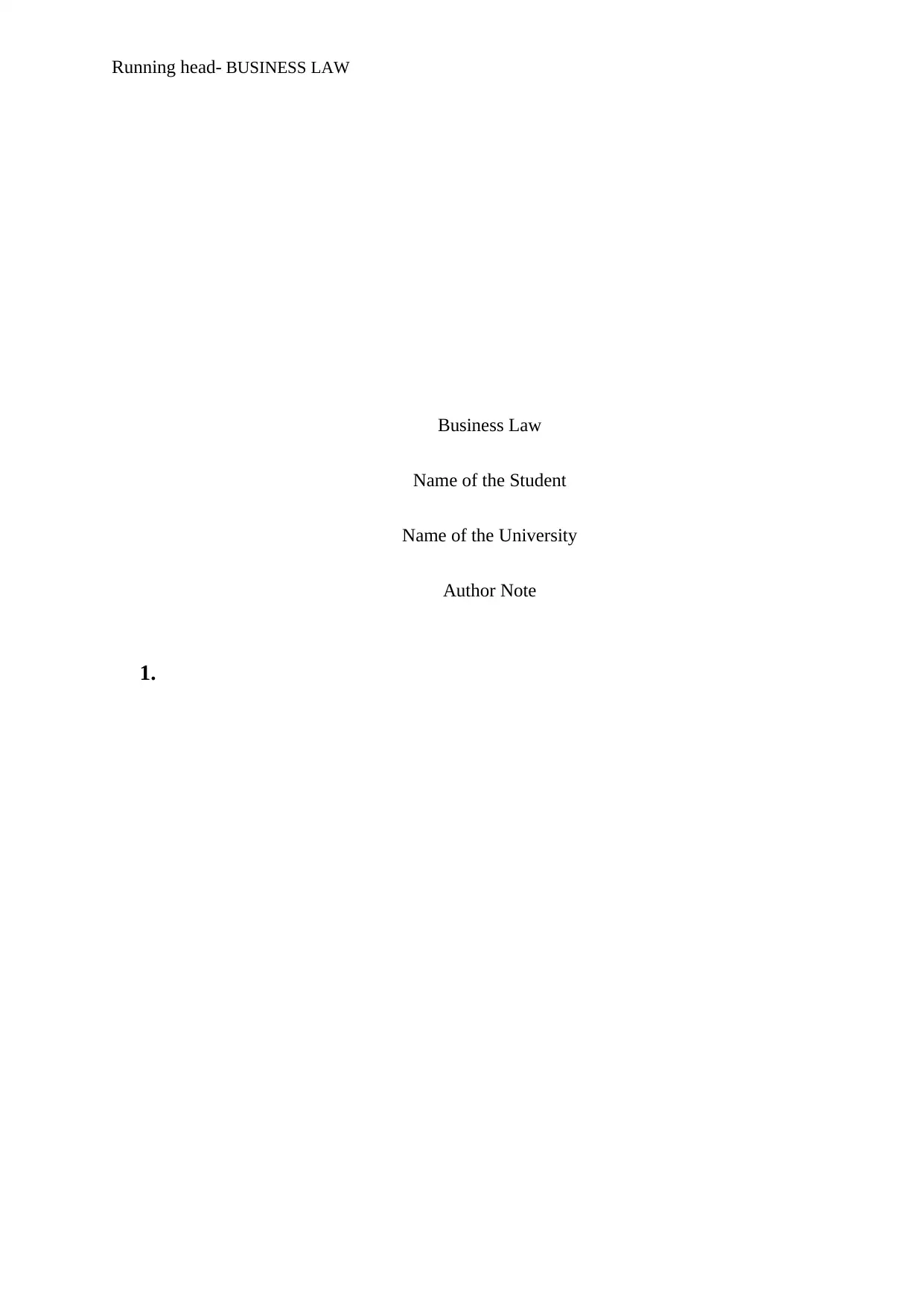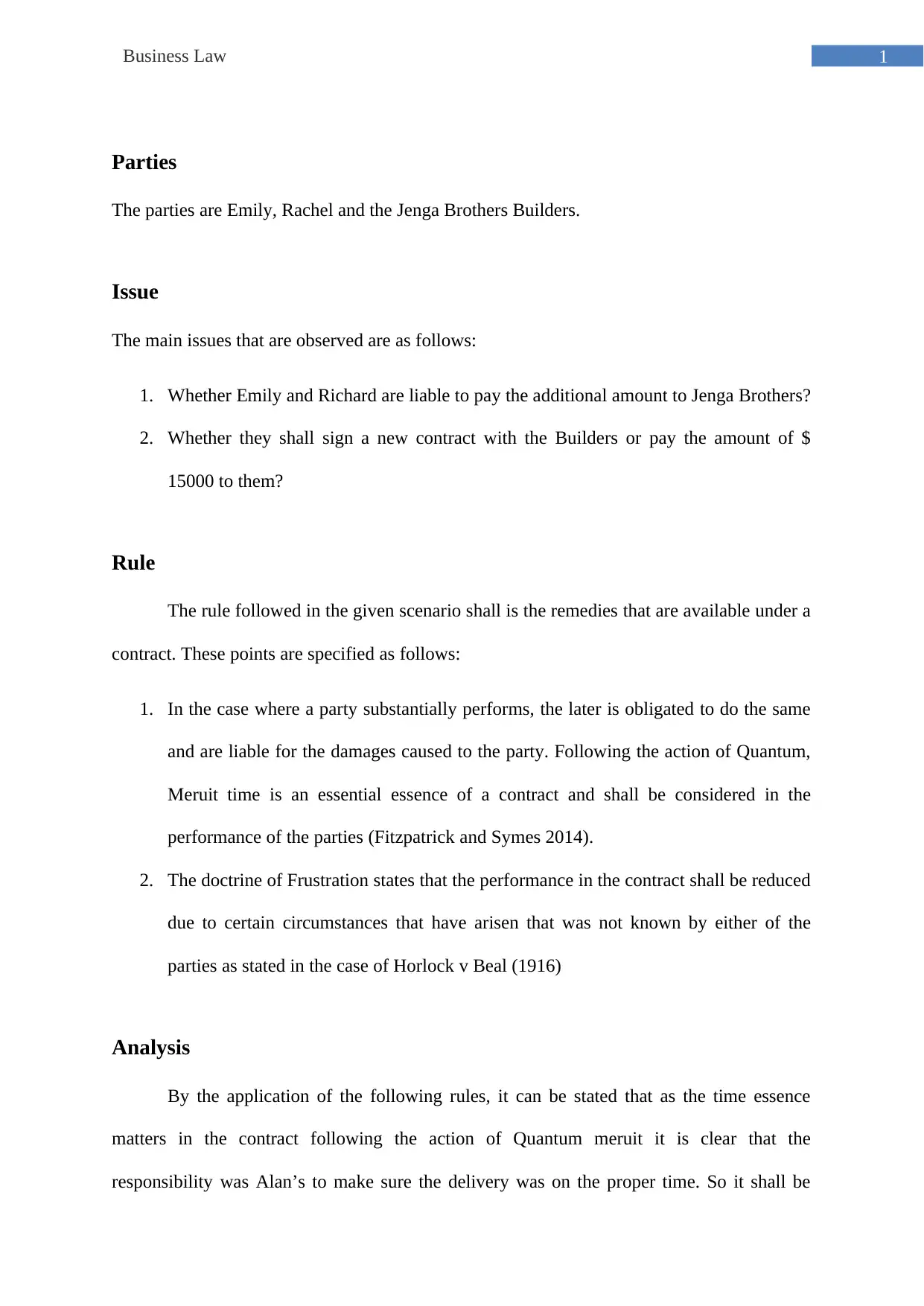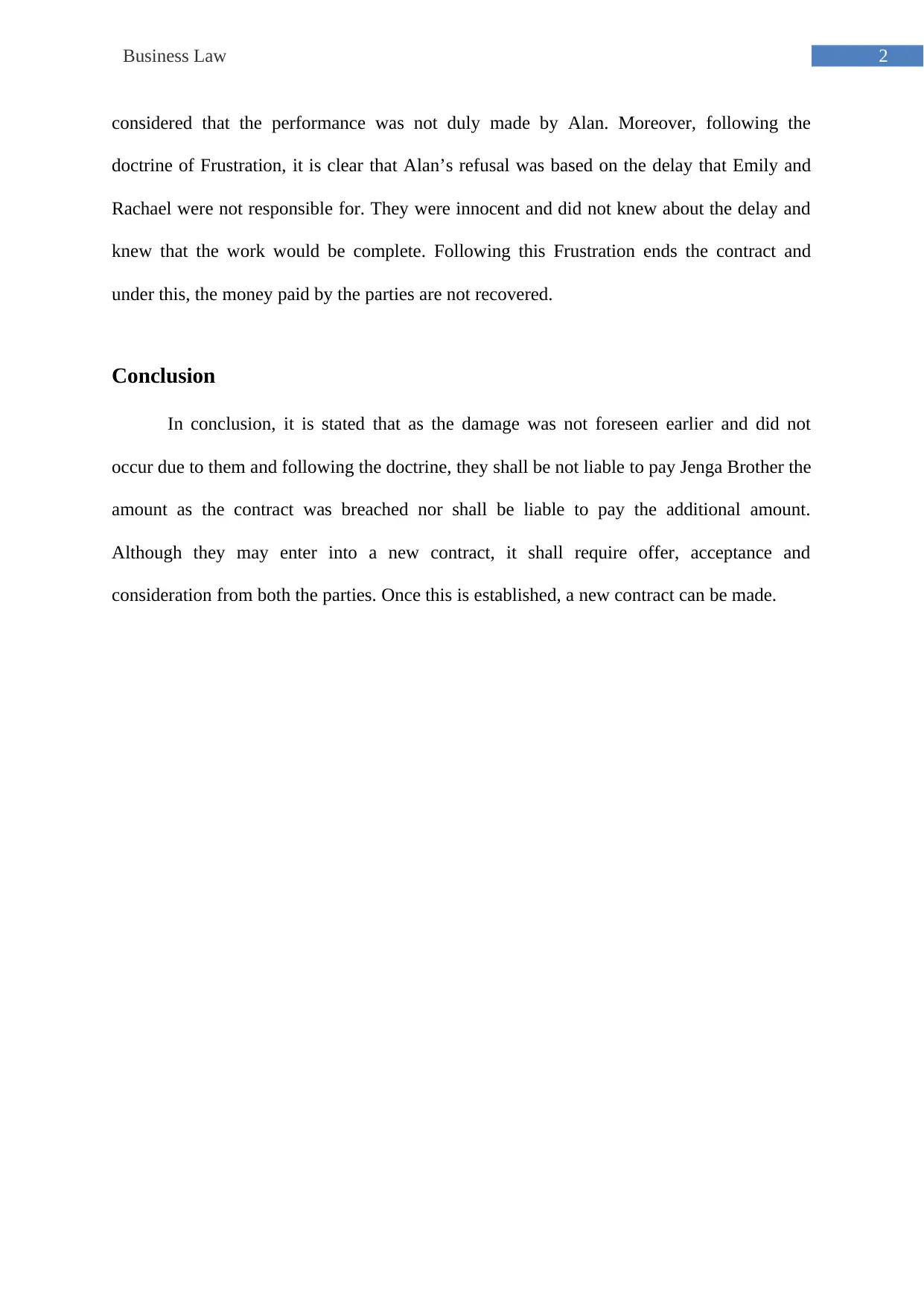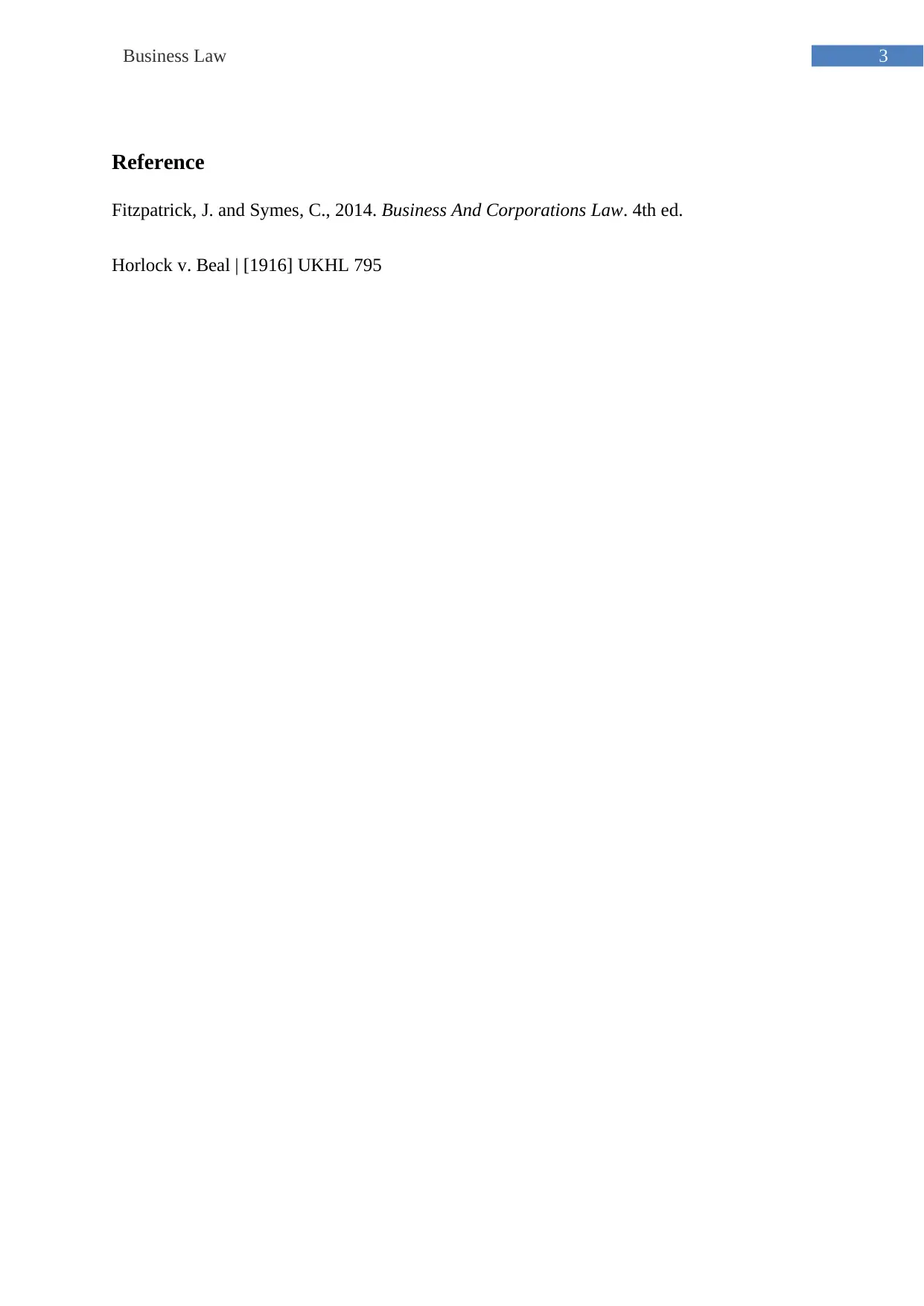Business Law: Contractual Liabilities and Partnership Agreements
VerifiedAdded on 2022/09/22
|4
|456
|23
Report
AI Summary
This assignment is a business law report analyzing a case study involving Emily, Rachel, and the Jenga Brothers Builders. The core issues examined are contractual obligations, liabilities, and the application of legal remedies. The report explores whether Emily and Rachel are liable for additional payments to the builders, considering elements like time essence, substantial performance, and the doctrine of frustration. The analysis delves into partnership agreements, outlining essential components and addressing personal liability concerns when securing loans. The case study, "Looking Sharp", provides the basis for analyzing the roles of the partners and their employees. The report provides a comprehensive review of business law principles related to contracts, partnerships, and potential breaches.
1 out of 4




![[object Object]](/_next/static/media/star-bottom.7253800d.svg)